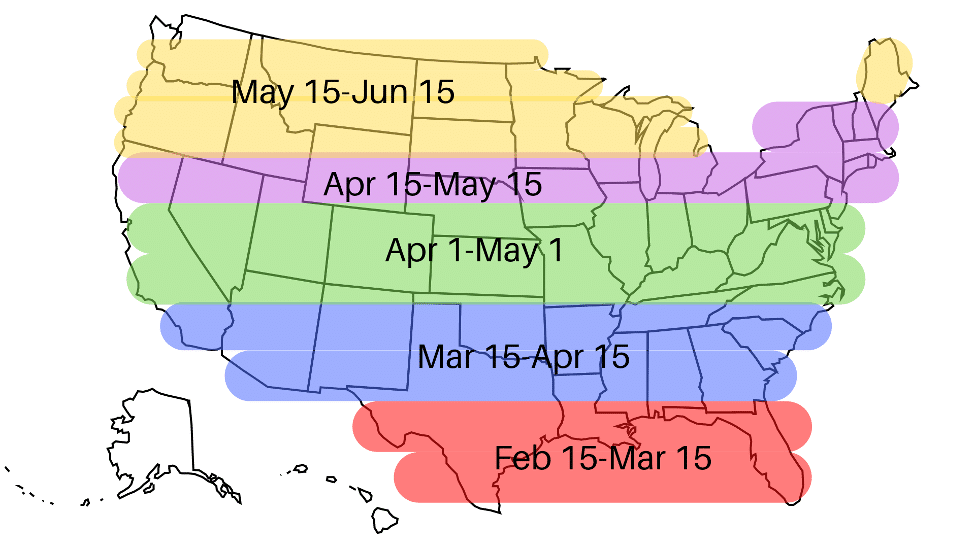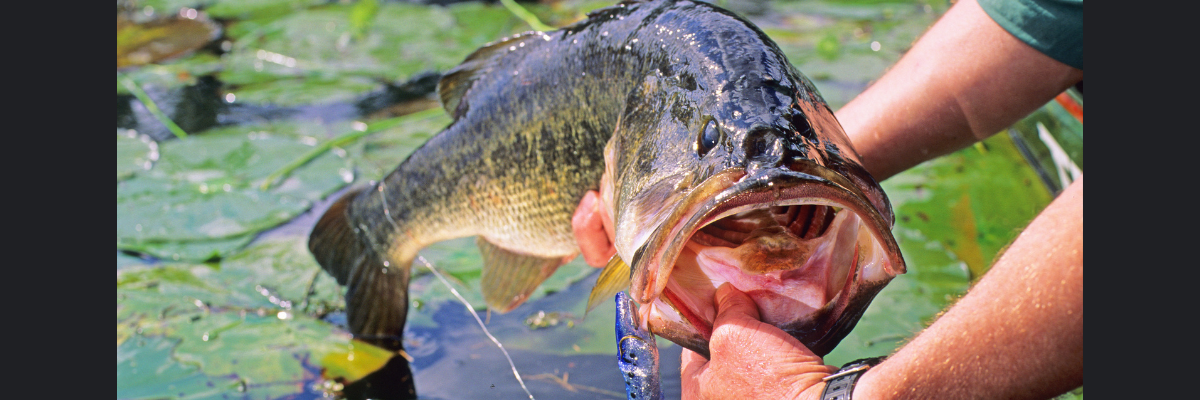Bass spawning season is an exciting time for anglers across the country. As water temperatures start to warm in the spring, largemouth and smallmouth bass begin their annual journey to shallow waters to spawn and lay eggs for the next generation.
However, the exact timing of “when do bass spawn?” varies greatly depending on which state you’re wetting a line. From the early bird spawners in southern states to the late bloomers up north, understanding regional spawn times is crucial for putting together a solid game plan.
In this article, we’ll break down what to expect in terms of prime spawning windows based on location and water temperature.
You’ll also learn why warming water acts as the catalyst for kickstarting bass into reproductive mode after a long winter. Let’s discuss everything you need to know about catching pre-spawn, spawning, and post-spawn bass depending on where you’re targeting these hungry bucketmouths across the country.

When Do Bass Spawn?
As an avid bass fisherman with over 20 years of experience chasing lunkers across the country, one of the most common questions I get from anglers is “when do bass spawn?” The bass spawn is a magical time of year – big females are full of eggs, the males are aggressive, and the overall bite can be incredible.
Bass begin their spawning season when water temperatures reach 55-65 degrees. The only thing that changes the timeline is your location in the country because this occurs later as you travel farther north.
Southern Spawning Season [March-April]
Down south, the spawn kicks off early thanks to warmer weather and water temperatures. In states like Florida and Texas, don’t be surprised to find bass bedding as early as January or February. The further north you go – up through states like Georgia, Alabama, and Louisiana – March is more common for spawn activity. Basically, once water temperatures climb into the 60s for an extended period, it’s go time!
As a bass fisherman, this early spawn is an exciting chance to capitalize on some of the hottest action of the year. The pre-spawn and spawn itself produce some true trophy catches. I’ve landed 10+ pounders in Florida while flipping beds in early March. You’ll find me chasing schooling bass with fast-moving baits like jerkbaits and crankbaits leading up to actual spawning.
Northern Spawning Season [May-June]
On the other end of the spectrum, bass in the most northern states don’t start their spawn until summer is right around the corner in May or even June. States like Minnesota, Wisconsin, Maine and others consistently have late spring spawns thanks to lingering cold temperatures and ice.
You really need that warm weather to arrive and stick around before largemouths get in the mood in these areas. It’s not uncommon at all to still have snow on the ground when bass first start building beds. Take advantage of these late spawns by tossing finesse presentations like small Ned rigs once the water climbs over 55 degrees.

Prime Spawning Times Based on Location
For bass fishermen in mid-range or “transition zone” states, mid-April is often the prime time for spawn activity. Places like Missouri, Kentucky, Ohio, Michigan, etc. see their lakes and reservoirs bump into the lower 60s around this time, triggering the urge to spawn for most largemouth populations.
Of course weather fluctuations play a big factor year to year, which is why keeping an eye on water temps is so important. Prolonged cold snaps can push back spawning activity well into May some seasons. But generally speaking, April is a great time to break out your favorite bed fishing baits like stick worms and swim jigs across transitional bass waters.
Why Water Temperature Triggers Spawning Instincts
As we’ve discussed, water temperature is the single biggest factor that kickstarts spawning behavior in all bass species. But why is this the case? After a long winter laying mostly dormant and feeding infrequently, warming water temperatures flip a switch in largemouths. This triggers an innate, biological urge to create the next generation of the fishery.
A bass’ metabolism starts firing on all cylinders when the water climbs above around 58 degrees. They become more active, begin feeding more aggressively, and start their migration from deeper areas toward their shallow water spawning zones.
Males scout out and create nesting areas, while females develop eggs as their bodies prepare for reproduction season. So in many ways, you can think of warming water as nature’s “alarm clock” for bass to wake up and get the urge to spawn!

Where to Find Spawning Bass?
While every body of water has its own prime bass real estate for the spawn, there are some common traits I look for year after year. Protected pockets, long tapering points, and back areas of creeks or feeder streams are classic staging and spawning zones. Focus on areas with harder bottoms – think gravel, rock, or wood debris beds – that male bass can clear off to create their nests.
Shallow docks are another key piece of structure that draws bedding bass and gives them an ambush point to attack prey. I’ve had dozens of 5+ pound fish crush reaction baits ripped parallel under docks in 2-4 feet of water during the spawn. It’s the intersection of cover and freshly cleared bedding areas that make docks such magnets this time of year in my experience.
No matter what region you’re targeting bass this spring, understanding their spawning cycles gives you a major advantage. Fish those warming shallows and be ready when your line goes tight! Timing truly is everything for consistently catching trophies during this special time of year for ole’ bucketmouth.








